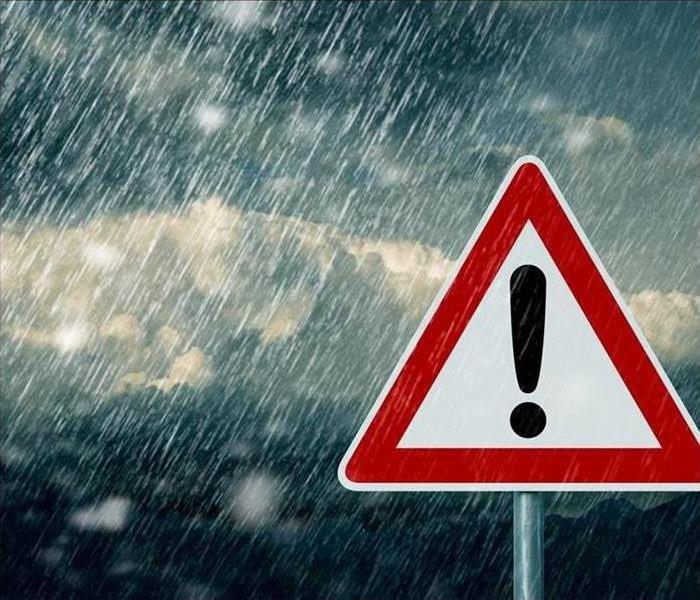How Can I Recover my Home After a Storm?
8/15/2022 (Permalink)
Violent Weather Events Can Lead to Flood Damage in Your Helena Home. SERVPRO has Experience Controlling Water Intrusion after Storm Events
How Does Water Intrusion Affect a Property?
Flooding can cause severe harm to your Helena residence by bursting through doors or windows and migrating quickly through rooms. Water migration affects properties in two ways. The first is from direct contact with materials that absorb moisture and can warp, bleed, or distort. The second is by increasing the amount of water in an indoor environment's air. High levels of humidity, and the resulting condensation, can lead to expensive losses as well as wall and ceiling damages. Stopping the spread of standing water and bringing in controls to the humidity is essential to recovering your property after a flood event. SERVPRO technicians have extensive experience working with flooded properties and can implement an efficient drying method to mitigate further losses.
How quickly does floodwater damage a property?
Water begins to cause flood damage as soon as it enters your Helena home. While it may appear as though standing water remains in place, it rapidly increases indoor humidity while seeping into baseboards, wall cavities, or subfloors. The presence of moisture not only exerts pressure on the structure of your home through water weight but can also increase the chances of mold growth or condensation damage. Quick response within the first three days of flooding is vital to recovering the majority of losses in your property. SERVPRO operates twenty-four hours a day and can perform essential emergency mitigation to prevent flooding from causing irreversible harm.
How does water move through a home?
- Liquid flow occurs from plumbing malfunctions, groundwater flooding, roof leakages, and flash flooding and is commonly observed in properties with storm damages.
- Air movement occurs when bodies of water evaporate and enter into cracks, crevices, or cavities, causing water infiltration
- Capillary suction occurs when water moves into porous materials like upholstery or carpeting and spreads rapidly
- Vapor diffusion causes lower level flooding to affect upper levels without an appropriate vapor barrier installed
How does flooding affect ceilings, walls, and flooring?
Experience is central to efficient restoration. Water moves through materials differently, which can complicate drying or invalidate a stock drying method. SERVPRO technicians work in the local area, which gives us a first-hand understanding of the typical material construction of residential communities. Knowing the floor, ceiling, or wall assembly of a building helps us to understand where to look for moisture and what methods your home requires to dry efficiently. If water affects the first floor of your property and migrates to the basement or cellar, there may be a cavity in-between the two rooms. Drying each room individually without inspecting the ceiling cavity could lead to mold or water damage that reveals itself several days into restoration.
SERVPRO technicians use borescopes, moisture probes, and our knowledge of floor assembly to ensure the drying procedure takes into account your home's unique architecture.
What building materials absorb the most water during flooding?
- Carpeting, textiles, and upholstery can absorb large amounts of moisture in a short period
- Unfinished natural materials like the wood used in the frame of a building can become saturated with floodwaters
- Gypsum board, fiber-glass, or insulation
Are stone and masonry affected by water intrusion?
Concrete and bricks are semi-porous materials and can become adversely affected by water absorption. These materials typically take longer to absorb moisture. However, the resulting damage is much more severe than porous materials due to expansion or cracking. Drying concrete floors focuses on raising the temperature of the surface level to draw out moisture. Placing moisture sensors directly onto the surface of concretes can help SERVPRO technicians to ascertain how much water remains in the material and allows us to ensure floors are at low risk of damage after flood restoration.
When is it safe to return home after flooding?
Flooded properties can have severe structural issues as well as water contamination. SERVPRO conducts a walkthrough with you to inform you of the drying procedure and the outcomes of our restoration. After a walkthrough, it is safe for you to return to the property because it is thoroughly dry and safe from microbial infestation. Walkthroughs occur once mitigation is complete, and any damaged items or structure returns to their preloss condition.
Understanding your home's unique architecture and building materials is vital to performing a comprehensive restoration. Contact SERVPRO of Helena & Great Falls at (406) 458-6008 to mitigate losses.






 24/7 Emergency Service
24/7 Emergency Service
